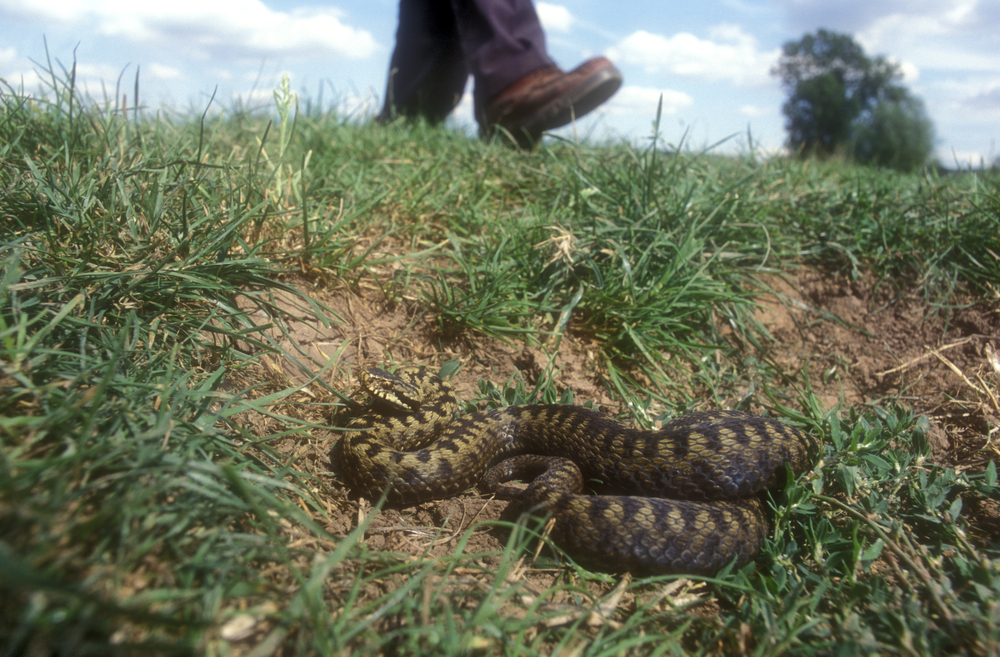
For all its beauty and tranquility, the New Forest is not a benign environment. People are often reminded that whilst nature can be managed she cannot be tamed.
The New Forest is internationally important because of its mosaic of habitats, which contain many rare and endangered species. Traditional management practices, particularly commoning, have conserved the ecological diversity of the Forest. But for all its beauty this is not a benign landscape. People who are unprepared to experience the abundant biodiversity of the New Forest are often reminded that whilst nature can be managed she cannot be tamed. Even though the Forest landscape does not contain large predators, such as big cats, wolves or bears, its resident blood feasting insects will make the unprepared visitor feel no less like someone’s dinner! However, people who like to spend time out of doors are generally accustomed to the risks and inconvenience of biting or stinging insects and know how to take appropriate action. Simple measures, including wearing long sleeves and trousers, rather than t-shirts or shorts, can provide some protection from insect bites, such as horseflies, harlequin ladybirds or ticks, all of which reside in the New Forest.
Wildlife that bites and stings
The tick problem on the New Forest is of particular concern, as these tiny blood-sucking insects can carry Lyme’s Disease (Lyme borreliosis), which is a nasty bacterial infection. The ticks are generally the size of a poppy seed and very difficult to see, but their irritating bite is often associated with a distinctive ringed rash that looks like a target, such as one would see on a dart-board or on an archery butt. Children are generally bitten above the waistline and adults on their legs. Early symptoms are flu-like and if left untreated can become more serious. Luckily, the treatment is a simple course of antibiotics. Wearing long trousers and staying on the footpaths and designated tracks of the New Forest is the best preventative measure, as ticks are found in many places, including wooded and grassy areas. Wearing muted colours and avoiding heavy perfumes or scents will also lessen the risk of attracting wasps and bees, which are drawn to bright colours and strong fragrances. Mosquitos and midges are a particular pest and in times past the New Forest commoners would make insect repellent from herb robert (Geranium robertianum), which grows on the heathland. The leaves of the elder-tree (Sambucus nigra) were used as an insecticide, amongst other things, as was broom (Cytisus scoparius), which was also used in a preparation to kill lice. Nowadays it’s much easier to just pick up pre-prepared insect repellents (or lice treatment if you need it) from High Street pharmacies or supermarkets.
Wildlife that bites and kicks
Luckily the New Forest doesn’t contain any wildlife that poses a significant threat to human health, such as deadly scorpions, spiders or snakes. Unless, of course, you are allergic to the bite of Britain’s only venomous snake – and New Forest resident – the adder (Vipera berus). This is not an aggressive snake but it will defend itself with a painful bite if disturbed or frightened. It can be found in various terrains across the Forest, where it preys on small mammals, birds, amphibians and lizards. The largest animal on the Forest likely to take a chunk out of you is a either New Forest pony or donkey, but you’ll have to do something pretty silly to deserve such rough treatment. They can also deliver a fairly hefty kick too. These animals are accustomed to visitors and generally prefer to keep themselves to themselves, but some people do insist on trying to stroke them, feed them or handle their offspring. Such provocation is bound to end up in retaliation!
Stay safe. Enjoy the New Forest.
There are lots of simple precautions that visitors to the New Forest can take to make sure that they have a safe and enjoyable day out. Such precautions include wearing appropriate clothing, headwear and footwear; using insect repellent; and, in warm weather, applying sun cream liberally and having plenty of drinking water. It is also recommended to avoid contact with the free-roaming animals and to keep to the designated tracks and pathways. In this way you are much more likely to enjoy your encounter with the New Forest and its wildlife than to be a victim to it.

Adders are commonly found on the New Forest and are protected by law.


You must be logged in to post a comment.